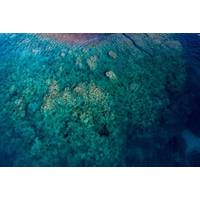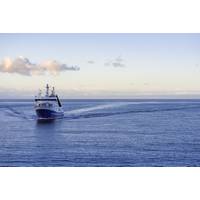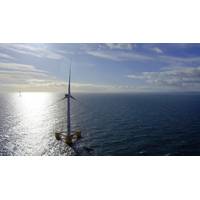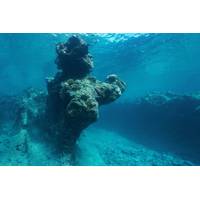
One Year After Volcanic Blast, Many of Tonga's Reefs Lie Silent
ricocheted across the region - slamming into the archipelago which lies southeast of Fiji.Coral reefs were turned to rubble and many fish perished or migrated away.The disaster worsened conditions for Tongans, more than 80% of whom were already relying on subsistence reef fishing, according to 2019 World Bank data. Following the eruption, the Tongan government said it would seek $240 million for recovery, including improving food security. In the immediate aftermath, the World Bank provided $8 million."In terms of recovery plan ... we are awaiting for funds to cover expenditure associated with

Scientists Working to Provide Detailed Picture of Tonga Volcano Eruption's Aftermath
globe, and caused a tsunami that resulted in deaths and damage as far away as South America.“It also severed both submarine fiber optic cables connecting Tonga with the world, leaving our country in a prolonged “blackout”. The direct economic impact of the eruption is estimated by the World Bank to be over $US90m. As a country, we’re building back slowly. We hope this research will help in the efforts to protect our nation and others like us in the future.”The TESMaP project will take place in two parts – NIWA’s research vessel Tangaroa, will set sail next week

Offshore Renewable Energy: A Port Puzzle for Floating Offshore Wind
will come into play that enables O&M offshore, including access solutions.Despite the many questions that still remain, there’s definite momentum in this sector. Many are confident the industry will see the cost reduction it needs to get it on par with fixed bottom offshore wind. The World Bank, for example, has said floating “is likely to be cost competitive” with fixed bottom offshore wind by the mid-2030s. Indeed, Noonan says, “Cost reduction is expected to happen even faster for floating than it did for bottom fixed and we expect scale and innovation could take us

Wilhelmsen, NorSea Acquire Stake in Norwegian Deep-sea Mining Firm
, but partnering with a frontrunner like Loke, which has such focus on developing new technologies and systems to safely and sustainably extract minerals from Norwegian waters puts us in an interesting position,” says John Stangeland, group CEO of NorSea.Marine minerals have been identified by the World Bank, World Economic Forum, and International Energy Agency as one of the potential solutions to meet the increasing demand for the metals currently used in electric vehicle batteries, clean energy technologies, and consumer electronics.Found in rock concentrations on the seabed and metallic layers

TechnipFMC Joins Seabed Mineral Extraction Arena
TechnipFMC, a company best known for its offshore oilfield services and equipment, is looking to diversify its offering and has now joined forces with Loke Marine Minerals (Loke) to develop enabling technologies for the extraction of seabed minerals in Norway.The World Bank, World Economic Forum, and International Energy Agency have recognized marine minerals as one of the potential answers for meeting the growing demand for metals used in electric vehicle batteries, clean energy technology, and consumer electronics.Loke Marine Minerals was established in 2019 by experienced offshore energy professional

Caribbean Set to Ride the 'Blue Economy' Wave
hampered by low growth and high debt, and they will need to attract financing to develop sectors like ocean renewable energy and marine biotechnology, they said."We very much see the blue economy as fundamentally central for the Caribbean region's economic growth," said Tahseen Sayed, the World Bank director for Caribbean countries, in a speech.The value of global oceans is estimated to be $24 trillion, the Caribbean Development Bank (CDB) said in its "Financing the Blue Economy" report, released Thursday at its annual board of governors meeting in Grenada.That estimate was based
Halls of Higher Learning
in multi-national research, focusing its efforts on three research areas: People and Ecosystems, Ecosystem Dynamics: Past, Present and Future and Responding to a changing world. It is the largest single institutional contributor to the Global Coral Reef Targeted Research Program, funded by the World Bank, and is an Institutional Member of the Resilience Alliance. The Centre of Excellence has strong links to the Census of Marine Life project, and to coral reef management agencies worldwide, particularly the Great Barrier Reef Marine Park Authority in Townsville, Australia. According to
BMT WBM to Showcase TUFLOW at World Bank Seminar
BMT WBM ( (BMT), a subsidiary of BMT Group Ltd, a leading international engineering and risk management consultancy, is delighted to announce that it will be presenting its TUFLOW flood and hydraulic modelling software suite at the World Bank’s Workshop ‘Flood Model Showcase’ event on September 23rd and 24th 2014 in Washington DC. The purpose of the workshop is to present common flood problems and the best-in-class models and tools that can be used to not only assess and mitigate risk, but also to educate decision makers in order to reduce exposure and vulnerability to flood
Caribbean Enviro-Fund: GEF Contributes US$7.2-million
The Nature Conservancy says that the Global Environment Facility (GEF), through the World Bank, has contributed US$7.2-million to the Caribbean Biodiversity Fund (CBF) to promote the conservation, protection, management and expansion of national protected area systems and other areas of biodiversity significance across the Eastern Caribbean region. The marine and coastal resources of the Caribbean – its coral reefs, beaches, fisheries and mangroves – serve as an essential economic engine. However, unsustainable coastal development, climate change and overfishing, as well as land-based


 February 2025
February 2025





